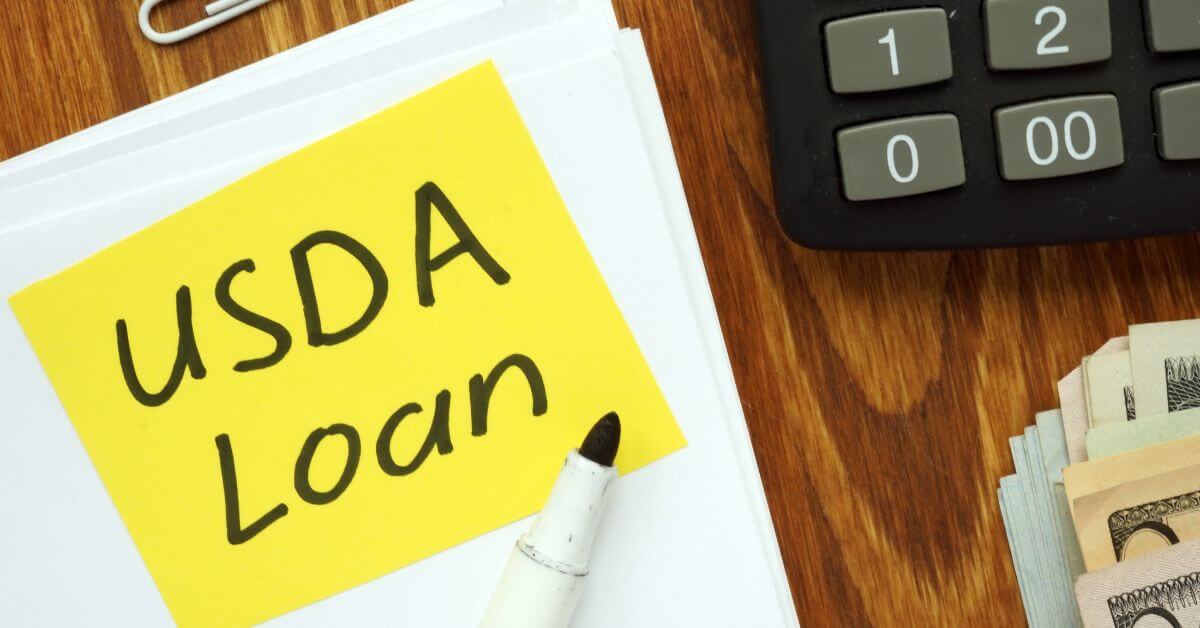This is the biggest decision you’ll make, you must get it right.
Buying a house with a loan involves many applications, requirements, hassles, and spending. But choosing the right type of loan makes the process bearable.
If you’ve been in the market long enough, then you know many loan options are available to pursue, with two popular options being conventional loans and USDA loans.
Both have their pros and cons, and understanding the differences between them can help you make the best decision for you and your circumstances.
So, in this article, we will tell you everything you need to know about both loan types and how they match up with each other.
Let’s deep dive—feel free to dive head first!
What Are Conventional Loans?
When it comes to financing a home, conventional loans are one of the most common options available. These loans are not backed by the government and are offered by private lenders such as banks, credit unions, and mortgage companies.
One of the key benefits of a conventional loan is that they offer flexibility in terms of the loan amount and repayment terms. You can choose a loan amount that suits your needs and budget and a variety of repayment terms, ranging from 10 to 30 years.
More impressively, conventional loans have lower interest rates than other types of loans. This is because lenders view these loans as less risky than other types of loans, which means that they can offer more competitive interest rates.
They do, however, often require a higher credit score and a larger down payment than other types of loans. This makes it difficult to qualify for a conventional loan, especially if you have a low credit score or limited funds for a down payment.
What Are USDA Loans?

USDA loans, on the other hand, are rural development loans that are backed by the United States Department of Agriculture.
These loans are designed to help individuals and families in rural areas purchase homes by offering them low-interest rates and flexible repayment terms.
One of the most significant advantages of USDA loans is that they require no down payment, making it an excellent option for those who have limited funds for a down payment.
This is unlike other government-backed loans like the FHA that require a 3.5% or 10% down payment, depending on your credit score. Learn more about their differences.
USDA loans also have flexible credit scores and lower interest rates than conventional loans, making them an attractive option for first-time buyers or homeowners who don’t have the best credit.
For home buyers, there are two types of USDA loans available: guaranteed USDA loans and direct USDA loans.
- Guaranteed USDA loans are offered by private lenders and are backed by the government. These loans are designed to help low- to moderate-income borrowers purchase homes in rural areas. In any case of a default on the loan, the USDA steps in to cover the cost incurred by the lender.
- Direct USDA loans are offered directly by the government and are designed for low-income borrowers who cannot obtain financing from other sources. They offer flexible repayment terms and low-interest rates, making them an attractive option for those who qualify.
You’ll also find USDA construction loans that are designed for borrowers who intend to build in a rural or suburban area.
How to Qualify for a Conventional Loan
Conventional loans have pretty extensive requirements, and the requirements may differ among lenders. If you meet these qualifications, a conventional loan may well be the best option for you.
Here are some of the basic requirements for conventional loans.
- Credit Score – Typically, conventional loan lenders require a credit score of 640, but some lenders may require a higher score.
- Down Payment – Lenders may require a down payment of at least 5% to 20% of the home’s purchase price, depending on the borrower’s creditworthiness.
- Debt-to-Income Ratio – Generally, lenders prefer a debt-to-income ratio of 43% or lower but may accept higher ratios in certain circumstances.
- Employment History – Lenders insist on a stable employment history and proof of income for the past two years.
- Property Appraisal – The property must be appraised by an approved appraiser to ensure that it meets the lender’s standards and is worth the loan amount.
How to Qualify for a USDA Loan

USDA loans have very specific requirements, unlike conventional loans, especially concerning income limits and property locations. Thus, it’s important to understand how the loan program works before your application.
Here are some of the basic requirements for USDA loans.
Income Limits
The 2024 income limit for a 1-4 member household in most areas is $103,500, whereas that of a 5-8 member household in most areas is $136,600. You can check the loan limit in your area here. If your household income is above the income limit in your area, you will not be eligible for a USDA loan.
Credit Requirements
There is no official credit score requirement to be eligible for a USDA loan. However,
- For a guaranteed loan, a credit score of 620 or higher is usually required by lenders.
- For a direct loan, you will still be considered with a lower score or even no score.
Down Payment Requirements
USDA loans offer 100% financing, meaning no down payment is required.
However, you are still responsible for paying closing costs, including fees for services such as home inspections, appraisals, and title searches.
You can negotiate with the seller to cover some or all of these costs through a seller concession.
Loan Limits
The USDA loan program has no set loan limit like conventional or FHA loans. Instead, the loan amount that you may qualify for will depend on your income, credit score, debt-to-income ratio, and other factors.
Additionally, there are income limits that vary by location and family size, which may impact the loan amount you’re eligible for.
Geographical Limits
The property must be in a rural or semi-urban area. This includes 97% of the land in the U.S. Find out if your area is eligible here.
Property Requirements
To qualify for a USDA loan, the property you are purchasing must meet certain requirements set by the USDA.
These requirements include:
- Property Location: The property must be located in a USDA-eligible area. You can check the USDA’s website to see if a property is located in an eligible area.
- Property type: The property must be a single-family primary residence. Multi-unit properties, such as duplexes and apartment buildings, are not eligible.
- Property condition: The property must be in good condition and meet certain minimum property standards the USDA sets. These standards include things like the roof, foundation, plumbing, and electrical systems.
- Property value: The property’s value must not exceed the USDA’s loan limits for the area in which the property is located.
- Zoning: The property must be zoned for residential use.
If you have a household income below the USDA limits and want to purchase a property in a rural area, USDA loans are a great option to consider. We recommend evaluating your current standing against these requirements before applying for a USDA loan.
Conventional Loan vs USDA Loan: Pros and Cons
Choosing between a Rural Development Loan and a Conventional Loan depends on your financial situation and property location. It’s important to weigh the pros and cons of each option and work with a knowledgeable lender to find the best fit for your needs.
To make your decision easier, we have compiled some of the most significant differences between each loan option.
| Conventional Loan | USDA Loan | |
|---|---|---|
| Credit Score Requirement | Generally requires a credit score of at least 640 | A minimum credit score of at least 620 |
| Income Eligibility | Borrowers should have a stable income and a debt-to-income ratio of 43% or less | Must meet income eligibility requirements based on the location of the property and household size |
| Property Eligibility | Property can be located in any area, including urban or suburban areas | Property must be located in an eligible rural or suburban area |
| Down Payment | Typically requires a down payment of at least 5% of the purchase price | No down payment is required for eligible borrowers |
| Mortgage Insurance | If the down payment is less than 20%, private mortgage insurance (PMI) is required | Upfront and annual mortgage insurance premiums are required |
| Closing Costs | Closing costs can vary but generally range from 2-5% of the purchase price | Closing costs can be financed into the loan amount |
| Interest Rates | Interest rates are typically higher | Interest rates are generally lower |
| Refinancing | Can be refinanced through a variety of programs | Can be refinanced through the USDA Refinance program |
| Approval Process | The approval process can take longer and is generally more stringent | The approval process can be quicker and more streamlined for eligible borrowers |
Frequently Asked Questions
Is it better to use a USDA loan or a conventional loan?
This depends on your situation. If you live in a rural area and you do not have great credit or a down payment saved up, a USDA loan might be the better option for you.
However, if you have great credit and a significant down deposit saved up, a conventional loan might be the better option for you.
Are USDA rates lower than conventional rates?
USDA loans typically offer lower interest rates than conventional loans, making them an attractive option for those who qualify. However, it’s important to note that the interest rate you receive will depend on your individual financial situation and credit score. USDA loans also allow for refinancing for improved loan payment terms along the way.
What is the downside of a conventional loan?
While conventional loans offer more flexibility in terms of property location and loan amounts, they often require a higher credit score and down payment compared to USDA loans.
This can make it difficult for you to qualify for the loan and afford the upfront costs of a conventional loan.
Additionally, they may have higher interest rates than USDA loans, depending on your financial situation and credit score.
Should I Get a Conventional Loan or a USDA Loan?
The answer? Whichever saves you a ton of money.
Both loans have differing benefits and disadvantages and can either be the best or worst route to financing your dream home with a loan. So choose wisely, or call us, and we’ll help you decide.
To recap, USDA loans require no down payment. However, they are only available for properties located in rural areas, and there are income limits that must be met.
Whereas conventional loans, on the other hand, offer more flexibility in terms of property location and credit score requirements but often require a higher down payment and excellent credit scores.






